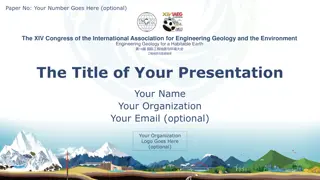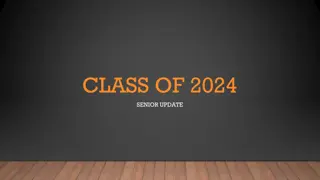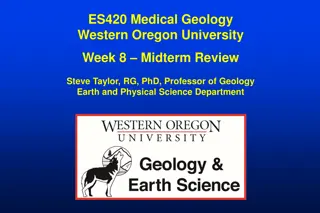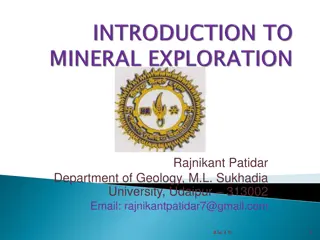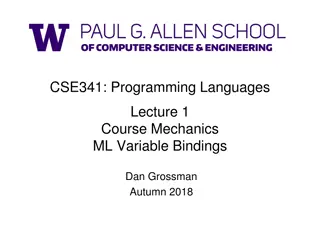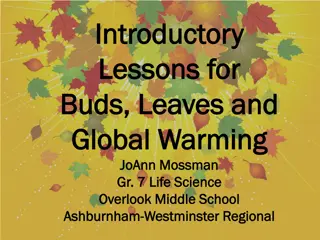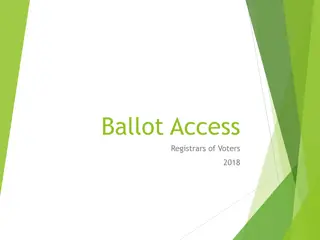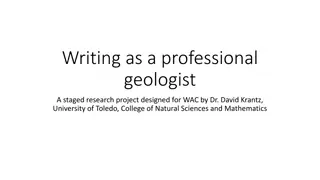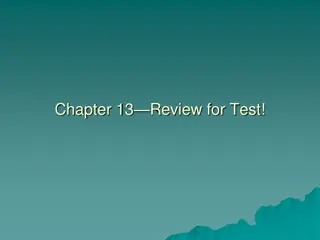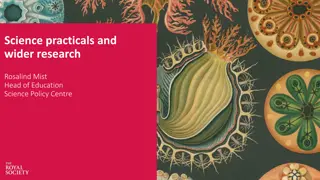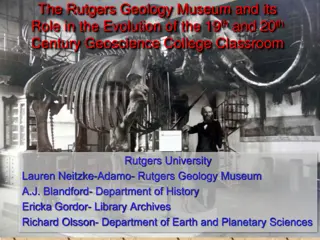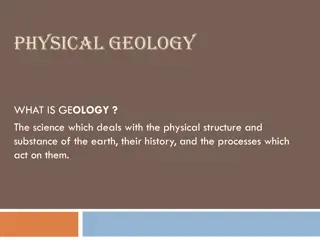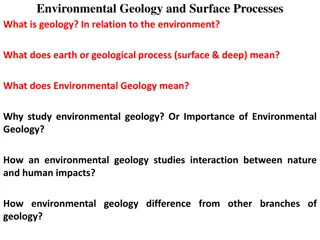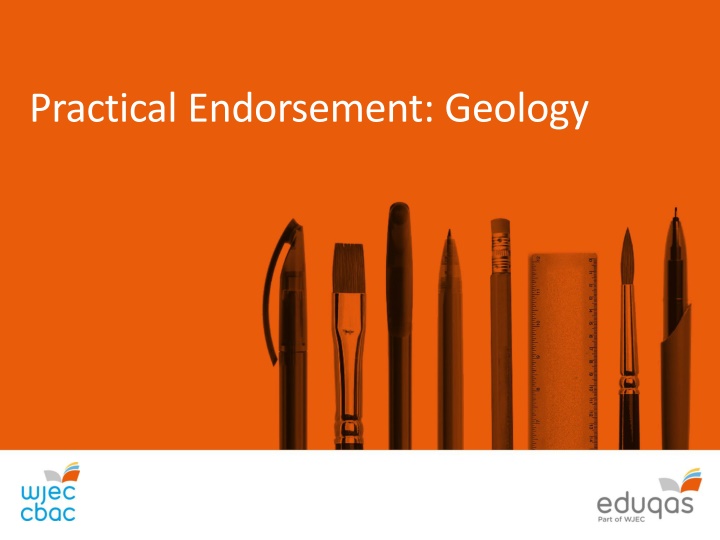
Practical Endorsement in Geology: Key Findings and Implementation Insights
Discover key findings and successful implementation strategies for the Practical Endorsement in Geology based on visits and assessments conducted during the first cycle. Insights on planning practical work, assessing CPAC statements, and providing feedback to candidates are highlighted.
Uploaded on | 1 Views
Download Presentation

Please find below an Image/Link to download the presentation.
The content on the website is provided AS IS for your information and personal use only. It may not be sold, licensed, or shared on other websites without obtaining consent from the author. If you encounter any issues during the download, it is possible that the publisher has removed the file from their server.
You are allowed to download the files provided on this website for personal or commercial use, subject to the condition that they are used lawfully. All files are the property of their respective owners.
The content on the website is provided AS IS for your information and personal use only. It may not be sold, licensed, or shared on other websites without obtaining consent from the author.
E N D
Presentation Transcript
Key findings from 2017-18 (Year 1 of the first cycle)
Key statistics 37 centres have been visited so far Approx 85% of centres visited by Eduqas passed the first time Centres that failed the 1st visit have been given support and will be visited for a 2nd time
Key findings Very positive Excellent practice being seen Evident more practical work is being completed Lots of extra equipment being used Change of emphasis in practical work from needing to get the right answer to the right answer is the one your data presents
Key features seen in centres who have successfully implemented the endorsement Clear planning of practical work and the CPAC statements to be assessed in each practical. Candidates were well informed about the practical endorsement and the meaning of CPAC statements. Don t leave them in the dark about CPAC; they need to understand it! Practical books were used in real time and at the bench by candidates when completing an observed practical. (Data should be recorded directly to their books. Practical books are therefore not expected to be in immaculate condition.)
Key features continued The teacher targeted appropriate assessment of CPAC in the practical lesson monitored. Do not be over ambitious in your assessment. Suitable feedback was given to candidates particularly about why they may have failed to achieve a CPAC statement and what they need to do next time to evidence it. There was use of peer assessment and self-assessment to reflect on practical work. A clear record keeping of learner performance is made. Please note: it is a record of the learners success against CPAC statements that is vital
Contact will be made with a centre by the monitor. Monitoring visits will follow the same procedures as in year one. Eduqas will conduct new first time visits between October December 2018. Centres that failed their first visit in 2017-18 will be visited before the end of November.
Lead teacher The lead teacher at some point must have attended practical endorsement training by Eduqas. The lead teacher must ensure that all members of the team are fully aware of the requirements of the practical endorsement. Standardisation of the endorsement needs to occur in departments with more than one teacher.
The purpose The purpose of the visit is to ensure that centres are: implementing practical endorsement appropriately applying the assessment criteria (CPAC) correctly The monitoring process is not intended to: moderate or adjust the results of individual candidates
Evidence that needs to be available: 1. Documented plans to carry out sufficient practical activities 2. A record of each practical activity undertaken and the date when this was completed 3. A record of the criteria being assessed in that practical activity 4. A record of student attendance 5. A record of which student met the criteria and which did not 6. Student work showing evidence required for the particular task with date 7. Any associated materials provided for the practical activity e.g. written instructions given
The day of the visit The monitor will: meet the Lead teacher observe a lesson including a practical activity discuss the teacher s CPAC assessment of the students meet students and discuss the practical work that students have been doing view the work of students from the lesson view teachers records of assessment of practical work.
The criteria CPAC 1 Follows written procedures CPAC 2 Applies investigative approaches and methods when using instruments and equipment CPAC 3 Safely uses a range of practical equipment and materials CPAC 4 Makes and records observations CPAC 5 Researches, references and reports
General points about the assessment of competencies Need to plan for a suitable balance on the competencies over the 2 years. No need to sub-divide the competencies up when recording outcome for a learner. Don t try and assess all the CPAC standards in one practical. If learners undertake practical activities in groups, the evidence generated by each learner must demonstrate that he or she independently meets the competency.
CPAC 1 Follows written procedures Correctly follows instructions to carry out the experimental techniques or procedures. Key points to note: This is generally being done well.
CPAC 2 Applies investigative approaches and methods when using instruments and equipment a) Correctly uses appropriate instrumentation, apparatus and materials (including ICT) to carry out investigative activities, experimental techniques and procedures with minimal assistance or prompting. b) Carries out techniques or procedures methodically, in sequence and in combination, identifying practical issues and making adjustments when necessary. c) Identifies and controls significant quantitative variables where applicable, and plans approaches to take account of variables that cannot readily be controlled. d) Selects appropriate equipment and measurement strategies in order to ensure suitably accurate results.
CPAC 2 Key points to note: Most difficult CPAC for learners to evidence. This CPAC should focus on the choice of equipment . This will be covered more in Year 13 than Year 12. It needs to be clear that there are planned. opportunities for it to take place in Year 13. Sometimes being awarded in Year 12 where the learners don t really have the opportunity to design the experiment. Make use of the period at the end of Year 12 to introduce the assessment of this CPAC.
CPAC 3 Safely uses a range of practical equipment and materials a. Identifies hazards and assesses risks associated with these hazards, making safety adjustments as necessary, when carrying out experimental techniques and procedures in the lab or field. b. Uses appropriate safety equipment and approaches to minimise risks with minimal prompting.
CPAC 3 Key points to note: This is generally being done well. Don t assess it every time. Plenty of opportunity just carefully choose the occasion. Full risk assessment not needed but candidates must be able to identify risks and hazards and work safely.
CPAC 4 Makes and records observations a. Makes accurate observations relevant to the experimental or investigative procedure. b. Obtains accurate, precise and sufficient data for experimental and investigative procedures and records this methodically using appropriate units and conventions.
CPAC 4 Key points to note: This is about recording raw data and not processing data. Are learners recording sufficient data? Are suitable tables constructed to capture data? Are learners recording data correctly (e.g. precision)? Do tables / records show units? Results should not be copied up later. Should come from the setting up of their own equipment. Quality of raw data recording seen has been variable.
CPAC 5 Researches, references and reports (a) Uses appropriate software and/or tools to process data, carry out research and report findings. (b) Sources of information are cited demonstrating that research has taken place, supporting planning and conclusions.
CPAC 5 this is occasionally confused with CPAC 4 Element 1 processing data, carrying out research and reporting findings Data may be processed using mathematical relationships or using graphs. Spreadsheets can be used but tools could also include more traditional methods. Not necessary to have a full report . Stating a (correct) answer is insufficient to get CPAC 5 but an answer with suitable reasoning is sufficient
CPAC 5 Second element Sources of information are cited demonstrating that research has taken place, supporting planning and conclusions. Candidates may reference sources of information used in planning or conclusions. May reference a data value or statement. Not necessary to use Harvard system but the source of information should be traceable from the reference given If a website is used candidate should give the URL and the data accessed.
Awarding Practical Endorsement to a Learner The majority of learners should obtain practical endorsement by the end of the course of study In order to be awarded a Pass a Learner must, by the end of the practical science assessment, consistently and routinely meet the criteria in respect of each competency. Remember You should inform the learner of your award before submitting information to WJEC. As long as the centre has passed the Monitoring visit WJEC will not change the centre decision.
Useful resources On the Eduqas A level Geology web pages (under all course materials): Teacher / technician guidance for specified practicals (in the back of the Guidance for Teaching) General student practical guidance CPAC links The practical endorsement standard Student record Teacher record Practical endorsement training material
Practical Endorsement : Entries to Awarding Body and closing remarks
Deadline for Entries Centres must enter the results for Practical Endorsement by 15 May for each candidate via the WJEC secure website.
Annual head of centre declaration This form needs to be signed confirming learners have: a) completed the practical activities as required by the awarding organisation (see page 60 of specification), and b) made a contemporaneous record of the work which that learner has undertaken during those practical activities.
Special cases Re-sit candidates if the candidate has passed the endorsement they can carry the result forward Private candidates need to ensure that they register with a centre that has passed the endorsement (it is a compulsory requirement of the qualifications)
Learner work After completion of the course there is no requirement for a centre to retain candidate records or centre records for the practical endorsement.
New centres If you are a new centre to Eduqas and have not been visited us, please contact Matthew Roberts to make yourself known to us You must have received a visit in order to award practical endorsement Email: matthew.roberts@eduqas.co.uk



